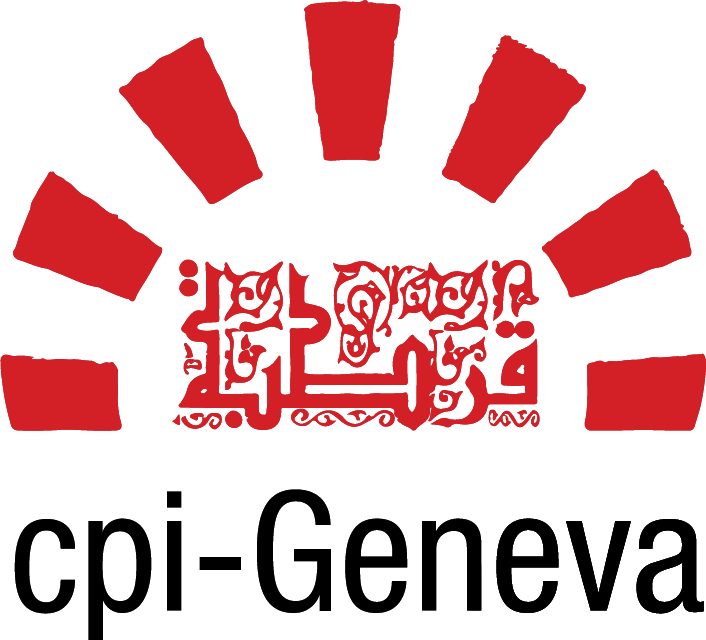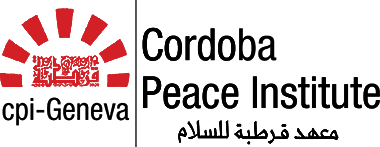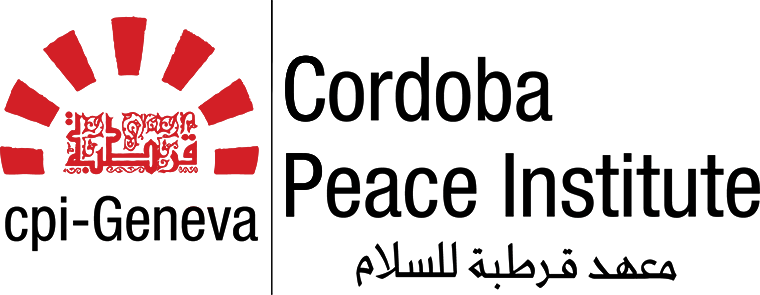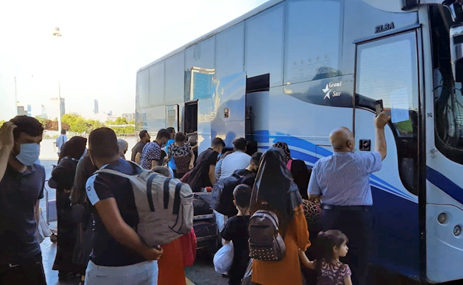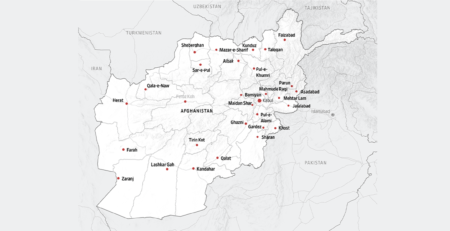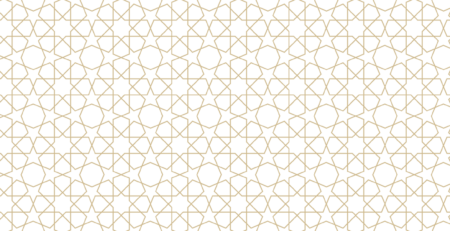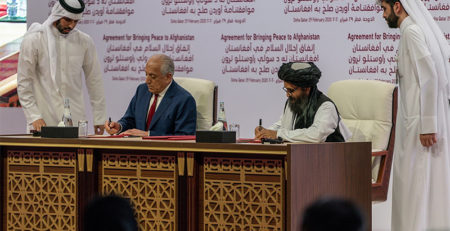CPI in Iraq

After years of conflict, Iraq has entered a phase of reconstruction and reconciliation. Although the Islamic State (IS) has been defeated, and territories reconquered, there are still numerous wounds to be healed before a lasting peace can be achieved. Indeed, the violence and the magnitude of the conflict has contributed to division within Iraqi society and increased the mistrust between the different communities.
Kilian Bello and Charlotte Mounier
Post-conflict Iraq
After years of conflict, Iraq has entered a phase of reconstruction and reconciliation. Although the Islamic State (IS) has been defeated, and territories reconquered, there are still numerous wounds to be healed before a lasting peace can be achieved. Indeed, the violence and the magnitude of the conflict has contributed to division within Iraqi society and increased the mistrust between the different communities.
According to IOM figures released in July 2021, nearly 1.2 million Iraqis are internally displaced (1) while UNHCR estimates at around 250’000 the number of Iraqi refugees in neighboring states (2). These displaced people and refugees face a number of obstacles that complicate their return, such as administrative barriers, the destruction of their homes, lack of public services, or the fear of reprisals if they come back. Indeed, people who decided to leave are often assimilated by their community of origin to Iraqis who have maintained links with IS and therefore fled for fear of having to face justice. A significant divide therefore exists between the Iraqis who chose to stay and those who left and who wish today to return to their town or village of origin, thus creating a climate of mistrust in the society, which sometimes leads to acts of violence (3). Thus, the host communities fear that the return of the displaced will also lead to the return of elements of IS and therefore a resumption of violence, while the displaced avoid returning for fear of reprisals. This situation blocks the possible return of those who fled the fighting and prevents any lasting solution in the long term for those now wishing to return home. The example of Talafar district is extremely telling; in fact, according to an IOM report, 81% of people wishing to return do not dare to do so until a reconciliation process has taken place (4).
In addition to this high number of displaced people, the war has also led to the disappearance of a significant number of people. These enforced disappearances are the work of armed groups such as IS, which kidnapped and carried out mass killings in the territories then under its control. However, these disappearances cannot be attributed solely to IS. In fact, in order to fight against IS, armed groups were established and united under the umbrella of the “Popular Mobilization Forces” (PMF). Although the primary purpose of these groups was to counter IS, they continue to exist despite the end of the war. The significant power gained by the PMF has led to a wave of mistrust among the population, caused by the crimes and violence that some factions are accused of having committed, such as enforced disappearances. Indeed, a joint report of the United Nations Assistance Mission for Iraq (UNAMI) and the Office of the United Nations High Commissioner for Human Rights (OHCHR) denounces the existence of enforced disappearances of men and boys perpetrated by factions of the PMF in the regions which were under their control (5).
CPI’s program in Iraq
Faced with this climate of mistrust, Cordoba Peace Institute – Geneva (CPI), has launched a program aimed at reestablishing confidence and encouraging dialogue among different Iraqi actors, using the diapraxis methodology consisting in a dialogue process reinforced by the launch of initiatives put in place jointly by the different parties. Offering these parties an opportunity to meet in a safe space organized by a neutral actor allows them to establish trust among themselves and to transform their words into concrete actions.
This program is made up of two projects:
The first project aims to establish a means of exchange between refugees and those who remained behind, so that trust can be restored between the two groups and that a voluntary and sustainable return mechanism can be developed. It was decided that this would be started through the organization of workshops bringing together influential actors representing the different stakeholders. The focus is on the return of former inhabitants of Talafar who are today refugees in Turkey, mainly around Ankara.
The second project seeks to establish an inter-religious consensus on the importance of addressing the issue of persons missing due to conflict, and the need to share information concerning their fate or their current location. The project brings together people with influence in Iraqi society, especially from a religious point of view, so that they discuss with the aim of launching a joint initiative that can help resolve this issue. Collaborating with these influential personalities allows the results of the discussions to reach broad sections of society and to encourage popular support for the agreements reached.
The program conducted by CPI therefore aims to address two issues that the end of the war alone cannot resolve. Today, it is essential to offer the various actors a means of meeting to be able to exchange their points of view, to understand each other, and to develop their respective discourse.
Rich discussions
After a preparatory phase made up of bilateral meetings between CPI and various experts, religious figures and tribal leaders, a first workshop was held on March 25 and 26, 2021 in Erbil to address the issue of missing persons. The workshop brought together 15 participants, including tribal leaders, experts in International Humanitarian Law (IHL), members of the Iraqi security services, and religious leaders. A second workshop on the same topic was organized a few months later, on August 12 and 13, 2021, again in Erbil. This workshop brought together 17 participants, mostly religious leaders of different beliefs as well as experts in IHL. These two meetings have enabled stimulating conversations and proposals to address the issue of enforced disappearances.
All participants welcomed the CPI project, highlighting, with the help of figures and personal examples, the impact of enforced disappearances on Iraqi society today. Finding out what happened to the missing is seen as an essential part of the process of reconciliation and peacebuilding in Iraq. Several participants expressed their frustration and dissatisfaction with the fact that the issue of enforced disappearances is not taken seriously enough by the Iraqi government. Indeed, many mass graves have not yet been investigated by the Iraqi authorities and the legal framework concerning these disappearances is not yet clearly defined. Nevertheless, the participants insisted on the role that the government should play on this issue, and their duty to put the government under pressure so that it finally takes charge of this matter. In the same vein, appeals were made to religious representatives present to use their influence to raise public awareness on this subject and to promote more important measures on the part of the government.
Thanks to these discussions, religious leaders representing the various traditions present in Iraq have been able to address the subject of missing persons and agree on the need to speak out on this issue so that more resources are allocated to it. As the influence of religious leaders in Iraq is particularly important, increased pressure on the government on this issue from them is likely to have a positive effect on the attention it receives. The meetings have made it possible to launch the practical initiative of forming a committee made up of religious leaders, experts in IHL and representatives of the State, which will be responsible for collecting information concerning missed people and promoting sharing information about their fate. Therefore, these workshops not only resulted in words but in real joint actions between the various actors brought together.
Regarding the second project of the program, a first workshop was organized on June 5 and 6, 2021 in Ankara. It brought together three groups of people: representatives of the Talafari community who are today refugees in Turkey, representatives of the inhabitants of Talafar, and representatives of the Iraqi government. This first meeting was an opportunity for each of the groups to discover and compare their own vision of matters to those of the others. Refugee representatives were thus able to explain their reluctance to return, especially the fear of being seen by the rest of the community as affiliated with IS and therefore possibly subject to attempts at revenge. The second group representing the inhabitants of Talafar was also able to express concerns about the possibility that former supporters of IS could be among those returning to Talafar. In order to remedy this mistrust, the participants highlighted the need to adhere to the Talafari identity and the danger that the sectarian policies advocated by some Iraqi politicians could cause.
The project on the return of refugees has achieved some concrete initial successes. Despite the existing mistrust between refugees and those who remained, a climate of confidence was quickly established between the participants of the different groups, who were able to talk about their fears of the other without any difficulty. A promising initiative has been launched and a return mechanism for families wishing to return to Talafar was set up thanks to the cooperation and initiative shown by the participants present during the workshops. This mechanism has already been tested and 25 refugee families in Turkey were able to return to Talafar in August 2021 [ Video ![]() ]. This was possible due to the effective participation of the Iraqi authorities, and thanks to the process of trust building which allowed these families to feel confident enough to engage in the return process.
]. This was possible due to the effective participation of the Iraqi authorities, and thanks to the process of trust building which allowed these families to feel confident enough to engage in the return process.
Encouraging Progress
The initiatives launched by CPI have been greatly welcomed by the participants and relevant authorities. The first workshops allowed the start of a process of building trust between the different parties and creating links between community representatives. The provision of a discussion forum in a safe space by a neutral and credible actor, where everyone is free to speak about their concerns and can calmly present their point of view to the other, has undoubtedly facilitated this exchange of information. Each party was thus able to clearly express its fears, desires, and reluctance, while listening to the other. These discussions have made it possible to make promising advances in each of the projects of the program.
This kind of joint action between different actors represents the goal sought by CPI projects using the diapraxis methodology. This encouraging start therefore allows us to be optimistic about the future of the program.
Kilian Bello and Charlotte Mounier
References
(1) https://dtm.iom.int/iraq
(2) https://www.unrefugees.org/emergencies/iraq/(3) Managing Return in Anbar: Community Responses to the Return of IDPs with Perceived Affiliation, IOM, 2020.
(4) Home Again? Categorising Obstacles to Returnee Reintegration in Iraq, IOM, 2021.
(5) Enforced disappearances from Anbar governorate 2015-2016: Accountability for victims and the right to truth, UNAMI and OHCHR, 2020.

